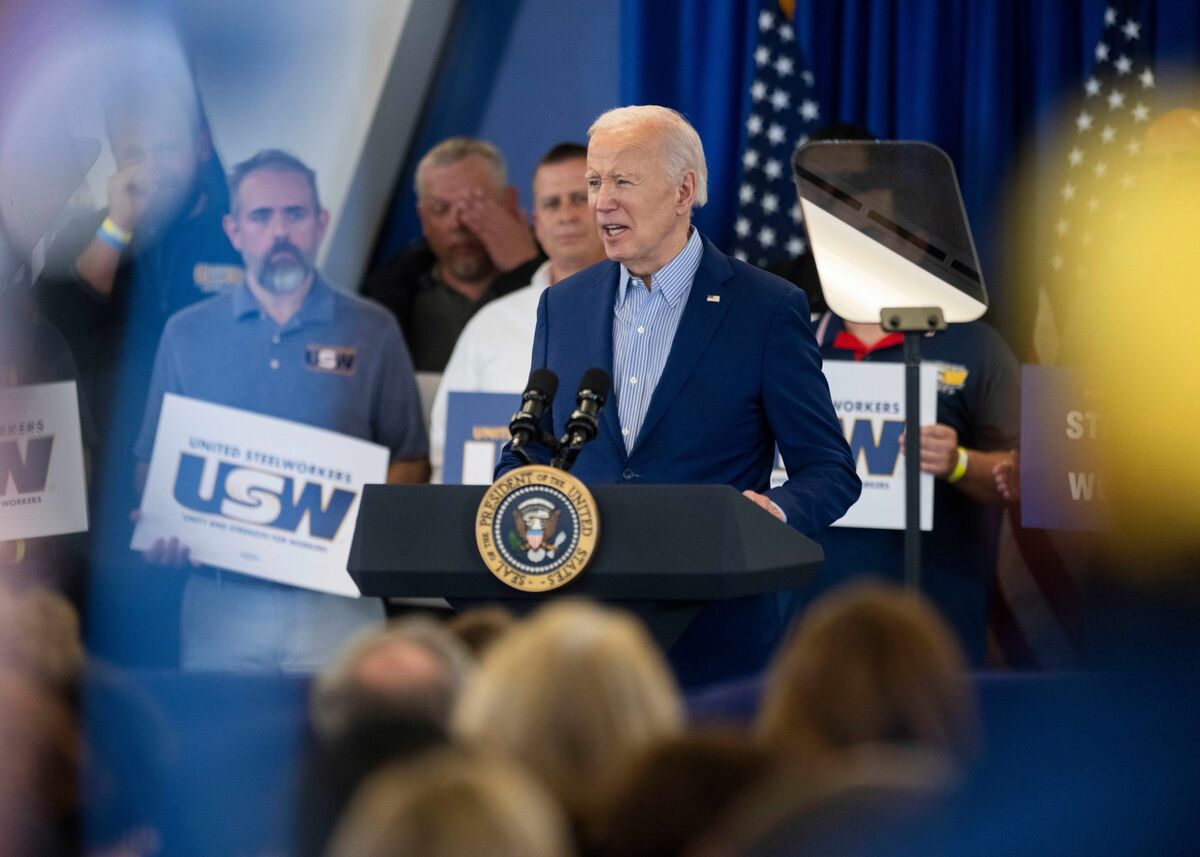Economy
Canada's economy has ‘free money lying on the sidewalk’ and nobody is picking it up – Financial Post

On the days the Bank of Canada sets policy, my inbox fills with commentary from various economists and sundry currency analysts.
This week’s commentariat included a new addition. Trevin Stratton, chief economist at the Canadian Chamber of Commerce, expressed dismay over the central bank’s revised outlook, which assumes the economy essentially stalled in the fourth quarter, and foresees only lacklustre growth of 1.6 per cent in 2020.
In a shift, Stephen Poloz, governor of the Bank of Canada, told reporters on Jan. 22 that interest-rate cuts might be necessary to offset deflationary pressures. For now, the central bank thinks the economy will pull out of this current soft patch, but the slope of the recovery will be gradual.
And that’s the problem. The central bank also raised its estimate of the economy’s non-inflationary speed limit to two per cent. The gap between that measure and the 2020 outlook suggests that Canada, despite its all-star potential, is performing like a third-liner.
“We have entered an era of low interest rates and sluggish growth as our economy has not been able to build any sustainable momentum,” said Stratton. “This is why the Canadian business community continues to press the government for a national economic strategy that can address our declining competitiveness.”
The biggest of the Big Business lobbies have upped their games over the past couple of months. In November, the Business Council of Canada, which represents the leaders of the country’s largest companies, released a report on what it thinks it will take to get the economy out of third gear. At the end of this month, the Chamber is hosting an “economic summit” in Toronto that will confront what it describes as “monumental transformation.”
Corporate leaders may have discovered what complacency gets you: nothing. Business was a non-entity in last year’s election campaign, meaning every member of Parliament has a mandate to ignore the concerns of the hiring class if he or she desires.
Another reading of Corporate Canada’s newfound urgency is that its members sense that the economy has drifted badly off course. “One month isn’t a trend,” said Goldy Hyder, head of the Business Council of Canada, when Statistics Canada reported a big drop in hiring in November, “but it’s important nonetheless to get ahead of things starting with having an actual economic plan for growth.”
One month wasn’t a trend; hiring rebounded in December.
Still, as the central bank observed, “job creation has slowed,” albeit at levels that are consistent with full employment. Poloz and his deputies also expressed concern over the trajectory of business investment, consumer confidence, and household spending. The momentum that resulted in the addition of more than one million jobs in Justin Trudeau’s first term as prime minister is petering out.
Bottom line: better-than-sluggish growth in 2020 is going to require stimulus of some kind. The question is, who should provide it?
In the fall, the Bank of Canada nudged finance ministers to do it. The Oct. 30 policy statement said officials would be paying particular attention to “fiscal policy developments.” If that was too ambiguous, Poloz told BNN Bloomberg later that day that $5 billion of fiscal stimulus was as good as a quarter-point cut in interest rates. The implication was that the central bank had been doing most of the work for years and that the time had come for others to help out.
Finance Minister Bill Morneau, for one, appears to have taken the hint. With interest rates already very low, the ability of central banks “to be effective in the face of challenges is different than it was in the last real challenge,” he told Bloomberg Television at the World Economic Forum in Davos, Switzerland, referring to the Great Recession. “That’s a reflection back on people like me,” Morneau added. “The world we’re in today is not the same as when rates were at a higher starting point.”
One of the first things Morneau did after the election was propose a modest income-tax cut worth about $6 billion per year once fully implemented. That sounded like it would take some pressure off the central bank, but rules of the thumb don’t always hold up in the real world. Poloz said the tax reduction probably will have only a modest impact on economic growth.
“It’s a targeted tax cut as opposed to a general fiscal stimulus,” he said.
At the same time, reduced spending in Ontario and Alberta will offset increased federal stimulus. The Bank of Canada said “fiscal tightening” in these provinces might partially explain weaker consumer confidence. Morneau probably also is near his limit, as the Parliamentary Budget Officer predicts he will struggle to keep his promise to shrink debt as a percentage of gross domestic product.
“There is zero net incremental fiscal stimulus in Canada,” said Derek Holt, an economist at Bank of Nova Scotia, which has been calling for lower interest rates since the fall. “The onus is on the BoC to step up to the plate if stimulus is needed.”
It might be possible to revive the economy without spending more money or tempting households to taken on more debt.
In the fall of 2018, the Trudeau government promised to ease the regulatory burden, in part by ordering regulators to take the economy into account when setting new rules. But little has happened since, and it’s not obvious that anyone in Ottawa cares. Ryan Greer, a policy director at the Chamber, said the sight of the federal government getting serious about de-regulation would be a “game-changer” for business investment.
The same goes for inter-provincial trade barriers. The International Monetary Fund estimates the free trade within Canada would increase per capita GDP by almost four per cent, massive stimulus that could be paid for with political capital, rather than more debt.
“That’s a huge number,” Poloz said at an event in Vancouver this month. “That’s free money, lying there on the sidewalk and everybody is refusing to pick it up.”
•Email: kcarmichael@postmedia.com | CarmichaelKevin
Economy
Biden's Hot Economy Stokes Currency Fears for the Rest of World – Bloomberg


As Joe Biden this week hailed America’s booming economy as the strongest in the world during a reelection campaign tour of battleground-state Pennsylvania, global finance chiefs convening in Washington had a different message: cool it.
The push-back from central bank governors and finance ministers gathering for the International Monetary Fund-World Bank spring meetings highlight how the sting from a surging US economy — manifested through high interest rates and a strong dollar — is ricocheting around the world by forcing other currencies lower and complicating plans to bring down borrowing costs.
Economy
Opinion: Higher capital gains taxes won't work as claimed, but will harm the economy – The Globe and Mail
Canada’s Prime Minister Justin Trudeau and Finance Minister Chrystia Freeland hold the 2024-25 budget, on Parliament Hill in Ottawa, on April 16.Patrick Doyle/Reuters
Alex Whalen and Jake Fuss are analysts at the Fraser Institute.
Amid a federal budget riddled with red ink and tax hikes, the Trudeau government has increased capital gains taxes. The move will be disastrous for Canada’s growth prospects and its already-lagging investment climate, and to make matters worse, research suggests it won’t work as planned.
Currently, individuals and businesses who sell a capital asset in Canada incur capital gains taxes at a 50-per-cent inclusion rate, which means that 50 per cent of the gain in the asset’s value is subject to taxation at the individual or business’s marginal tax rate. The Trudeau government is raising this inclusion rate to 66.6 per cent for all businesses, trusts and individuals with capital gains over $250,000.
The problems with hiking capital gains taxes are numerous.
First, capital gains are taxed on a “realization” basis, which means the investor does not incur capital gains taxes until the asset is sold. According to empirical evidence, this creates a “lock-in” effect where investors have an incentive to keep their capital invested in a particular asset when they might otherwise sell.
For example, investors may delay selling capital assets because they anticipate a change in government and a reversal back to the previous inclusion rate. This means the Trudeau government is likely overestimating the potential revenue gains from its capital gains tax hike, given that individual investors will adjust the timing of their asset sales in response to the tax hike.
Second, the lock-in effect creates a drag on economic growth as it incentivizes investors to hold off selling their assets when they otherwise might, preventing capital from being deployed to its most productive use and therefore reducing growth.
Budget’s capital gains tax changes divide the small business community
And Canada’s growth prospects and investment climate have both been in decline. Canada currently faces the lowest growth prospects among all OECD countries in terms of GDP per person. Further, between 2014 and 2021, business investment (adjusted for inflation) in Canada declined by $43.7-billion. Hiking taxes on capital will make both pressing issues worse.
Contrary to the government’s framing – that this move only affects the wealthy – lagging business investment and slow growth affect all Canadians through lower incomes and living standards. Capital taxes are among the most economically damaging forms of taxation precisely because they reduce the incentive to innovate and invest. And while taxes on capital gains do raise revenue, the economic costs exceed the amount of tax collected.
Previous governments in Canada understood these facts. In the 2000 federal budget, then-finance minister Paul Martin said a “key factor contributing to the difficulty of raising capital by new startups is the fact that individuals who sell existing investments and reinvest in others must pay tax on any realized capital gains,” an explicit acknowledgment of the lock-in effect and costs of capital gains taxes. Further, that Liberal government reduced the capital gains inclusion rate, acknowledging the importance of a strong investment climate.
At a time when Canada badly needs to improve the incentives to invest, the Trudeau government’s 2024 budget has introduced a damaging tax hike. In delivering the budget, Finance Minister Chrystia Freeland said “Canada, a growing country, needs to make investments in our country and in Canadians right now.” Individuals and businesses across the country likely agree on the importance of investment. Hiking capital gains taxes will achieve the exact opposite effect.
Economy
Nigeria's Economy, Once Africa's Biggest, Slips to Fourth Place – Bloomberg


Nigeria’s economy, which ranked as Africa’s largest in 2022, is set to slip to fourth place this year and Egypt, which held the top position in 2023, is projected to fall to second behind South Africa after a series of currency devaluations, International Monetary Fund forecasts show.
The IMF’s World Economic Outlook estimates Nigeria’s gross domestic product at $253 billion based on current prices this year, lagging energy-rich Algeria at $267 billion, Egypt at $348 billion and South Africa at $373 billion.
-



 Sports24 hours ago
Sports24 hours agoAuston Matthews denied 70th goal as depleted Leafs lose last regular-season game – Toronto Sun
-
Media4 hours ago
DJT Stock Rises. Trump Media CEO Alleges Potential Market Manipulation. – Barron's
-
Business23 hours ago
BC short-term rental rules take effect May 1 – CityNews Vancouver
-
Media6 hours ago
Trump Media alerts Nasdaq to potential market manipulation from 'naked' short selling of DJT stock – CNBC
-
Art22 hours ago
Collection of First Nations art stolen from Gordon Head home – Times Colonist
-



 Investment23 hours ago
Investment23 hours agoBenjamin Bergen: Why would anyone invest in Canada now? – National Post
-



 Tech24 hours ago
Tech24 hours ago'Kingdom Come: Deliverance II' Revealed In Epic New Trailer And It Looks Incredible – Forbes
-
Media19 hours ago
DJT Stock Jumps. The Truth Social Owner Is Showing Stockholders How to Block Short Sellers. – Barron's




